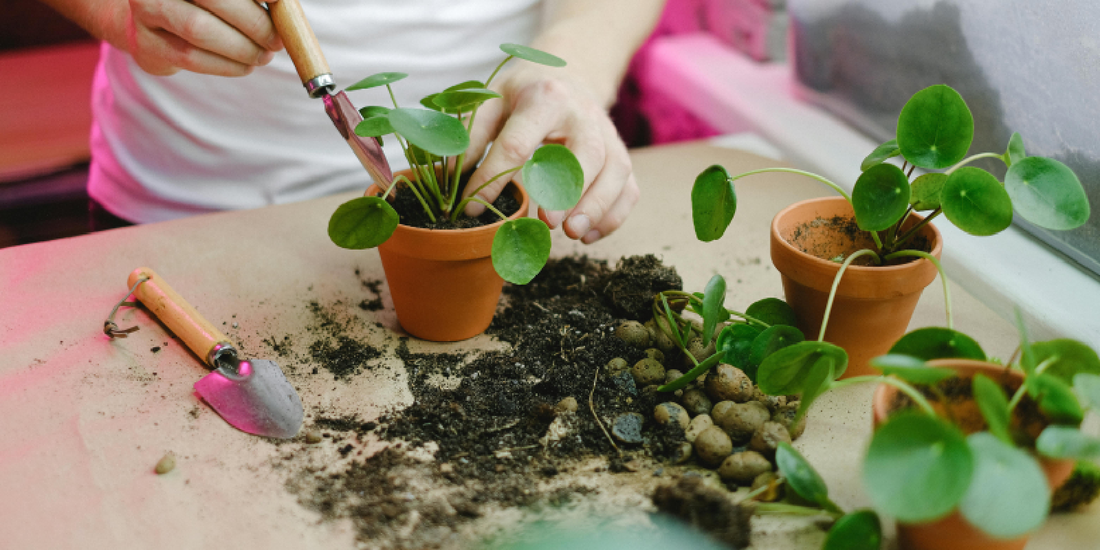
Grow Light Intensity and Plant Growth Explained
Share
Indoor gardening has transformed the way plant lovers nurture greenery, especially in environments where natural sunlight is limited. At the heart of healthy indoor plants is one critical factor: light intensity. Whether you’re growing tropical houseplants, herbs, or flowering species, understanding how light intensity affects plant growth is essential for creating a thriving indoor garden.
In this article, we’ll break down what grow light intensity means, how it influences plant development, and how the amoyls VerdantGlow S-Shaped 8-Tier Plant Shelf with Grow Lights offers an optimized solution for both beginners and experienced plant enthusiasts.
1. Understanding Grow Light Intensity
Light intensity refers to the amount of light that reaches a plant’s surface, usually measured in micromoles per square meter per second (µmol/m²/s) or in lux for general purposes. For plants, this measurement directly affects photosynthesis—the process that allows them to convert light into energy.
Key concepts to know:
- PAR (Photosynthetically Active Radiation): The spectrum of light plants can use for photosynthesis (400–700 nm).
- PPFD (Photosynthetic Photon Flux Density): How much usable light reaches a plant per second.
- Distance Matters: Light intensity decreases as the distance between the plant and the light source increases.
The correct intensity ensures your plants receive enough energy without being overwhelmed by excess light, which can cause leaf burn.
2. Why Light Intensity Matters for Plant Growth
Light intensity directly influences:
- Photosynthetic Rate – Higher intensity generally boosts photosynthesis, leading to faster growth (up to the plant’s saturation point).
- Leaf Size & Color – Adequate light maintains deep green leaves, while low light can cause pale, elongated growth.
- Flowering & Fruiting – Certain plants require high light intensity to trigger blooming and fruit development.
Insufficient light results in:
- Leggy stems
- Slow growth
- Reduced leaf size
- Poor flowering
Too much light, on the other hand, can cause bleaching, leaf scorch, or dehydration.
3. Matching Light Intensity to Plant Types
Different plants have different light requirements. Here’s a quick guide:
|
Plant Type |
Ideal PPFD Range |
Light Level |
|
Low-light plants (ferns, pothos) |
50–150 µmol/m²/s |
Indirect light |
|
Medium-light plants (peace lily, herbs) |
150–400 µmol/m²/s |
Bright indirect |
|
High-light plants (succulents, tomatoes) |
400–800+ µmol/m²/s |
Direct bright light |
Understanding your plant’s native environment helps determine the right light intensity for healthy growth.
4. Measuring and Adjusting Grow Light Intensity
While many indoor gardeners estimate light intensity by eye, using tools like a lux meter or PAR meter gives precise readings. Adjustments can be made by:
- Changing Light Distance – Moving lights closer increases intensity; moving them away decreases it.
- Adjusting Light Power – Dimmable grow lights allow you to fine-tune intensity for each growth stage.
- Altering Duration – Increasing daily light exposure can compensate for lower intensity.
5. The Role of amoyls VerdantGlow S-Shaped 8-Tier Plant Shelf
The VerdantGlow S-Shaped Plant Shelf with Grow Lights is engineered to provide optimal light intensity distribution across multiple plant tiers. Here’s how it solves common indoor gardening challenges:
- Uniform Coverage – Each tier has integrated grow lights, ensuring consistent intensity from top to bottom.
- Adjustable Positioning – Lights are positioned to reduce shading between tiers, important for multi-level plant setups.
- Energy Efficiency – Full-spectrum LED lights deliver targeted wavelengths without excessive heat.
- Space-Saving S-Shaped Design – Allows maximum exposure while fitting neatly into corners.
This design prevents the typical issue where lower plants receive significantly less light than upper tiers—a common problem in vertical gardening.
6. Light Intensity Through the Growth Stages
Plants require different intensities at various stages:
- Seedling Stage – Gentle, consistent light (100–200 µmol/m²/s) prevents shock and encourages strong roots.
- Vegetative Stage – Higher intensity (300–600 µmol/m²/s) fuels leaf and stem growth.
- Flowering/Fruiting Stage – Maximum intensity (600–900 µmol/m²/s) boosts energy for blooms and fruit set.
The VerdantGlow shelf accommodates all stages by allowing plants to be placed at optimal distances from the integrated lights.
7. Balancing Light Intensity with Other Factors
Light intensity works in harmony with:
- Light Duration (Photoperiod) – Most plants thrive on 12–16 hours of light per day.
- Light Spectrum – Blue light encourages vegetative growth; red light promotes flowering.
- Temperature & Humidity – Too much heat from lights can stress plants; LEDs minimize this risk.
The amoyls grow lights provide a balanced full-spectrum output that covers both blue and red ranges, ensuring plants receive the right cues for growth.
8. Common Mistakes in Managing Light Intensity
Avoid these pitfalls:
- Placing lights too far away, leading to weak growth.
- Using overly strong lights without acclimating plants.
- Ignoring the lower tiers in vertical gardens.
- Not adjusting intensity for seasonal changes.
The VerdantGlow shelf’s design and integrated lighting help prevent these mistakes, making it beginner-friendly yet professional-grade.
9. Real-World Results with VerdantGlow
Indoor gardeners using the amoyls VerdantGlow report:
- Healthier leaf color and structure
- Increased flowering frequency
- Stronger root development
- Uniform growth across all shelves
Its combination of aesthetic appeal and functional grow lighting makes it a centerpiece for any home plant collection.
10. Final Thoughts
Light intensity is not just about brightness—it’s about delivering the right amount of usable energy for photosynthesis. By understanding and controlling this factor, you can transform your indoor garden from surviving to thriving.
The amoyls VerdantGlow S-Shaped 8-Tier Plant Shelf with Grow Lights removes guesswork, offering an elegant, space-saving, and scientifically designed solution for plant lovers. With uniform lighting, full-spectrum LEDs, and a stylish vertical design, it supports your plants’ growth at every stage.
Ready to optimize your indoor garden?
The right light intensity could be the missing ingredient your plants need to flourish.
